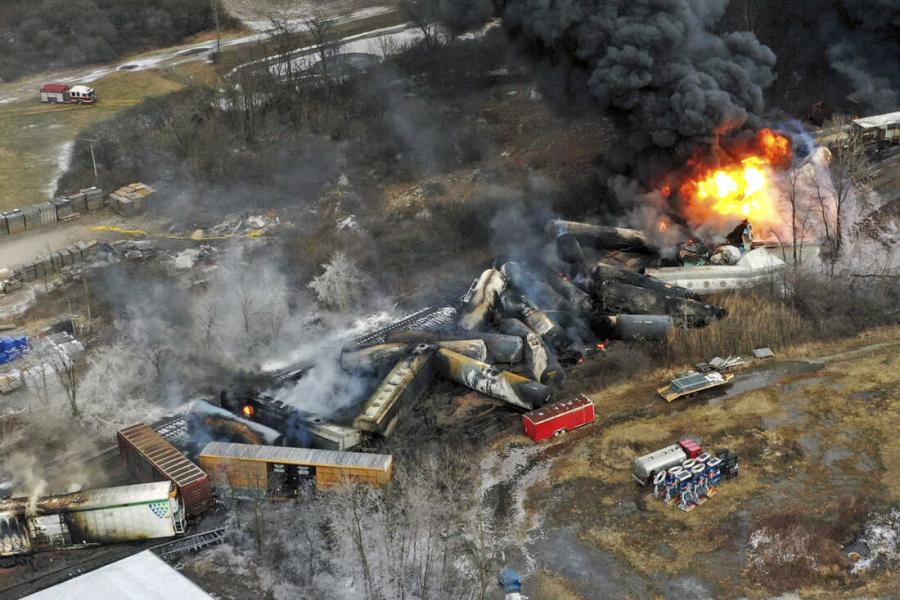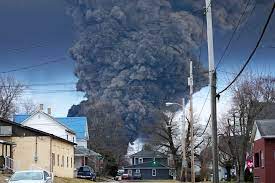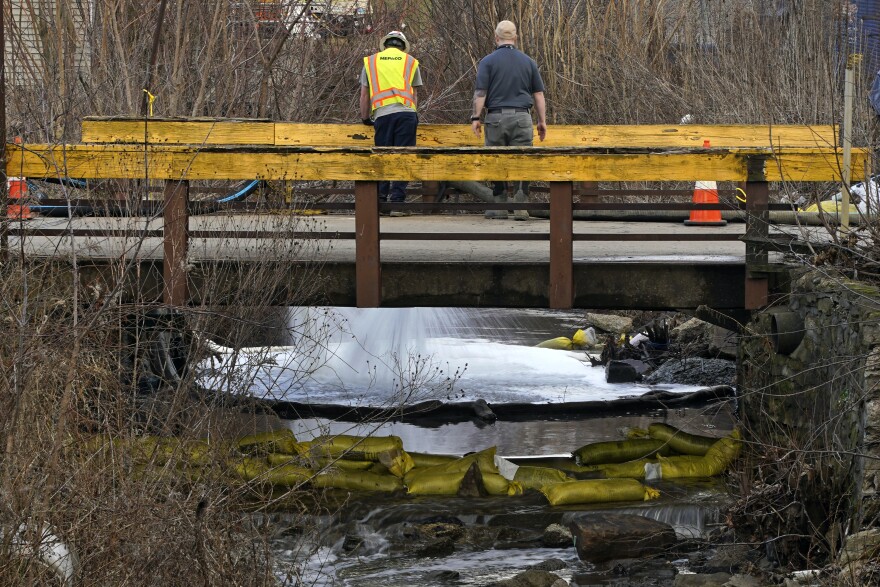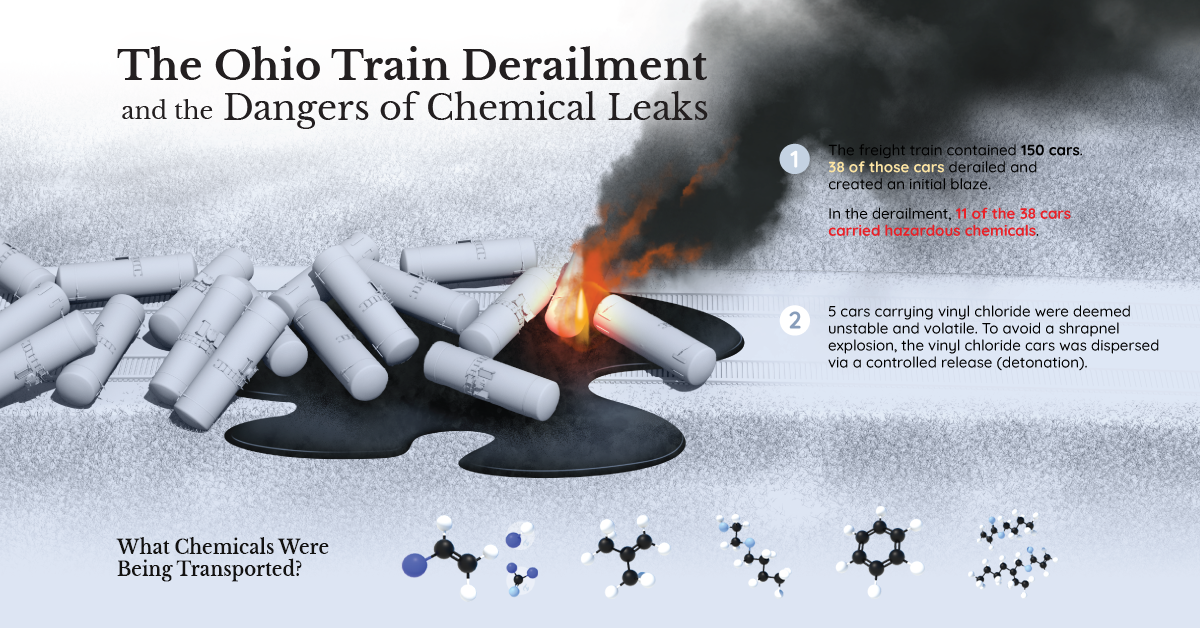NLC: City leaders urged to weigh in on regulations following Ohio derailment

BY KATE COIL
TML Communications Specialist
Following the toxic train derailment in East Palestine, Ohio, city leaders can take an active role in promoting federal regulation intended to reduce the risk their own communities face.
The National League of Cities continues to support action by Congress to give the U.S. Department of Transportation, the National Transportation Safety Board (NTSB) and the U.S. Environmental Protection Agency (EPA) the authority to take actions to improve rail safety in the U.S. While the Bipartisan Infrastructure Law includes important rail safety programs, like the Railroad Crossing Elimination Program, there is room for targeted policies that have been in discussion in the halls of Congress for some time.

NLC has both asked city leaders to contact federal representatives and their lawmakers with their concerns about rail safety as well as use available tools to assess their own risk for derailment.
In 2022 alone, there were 1,164 derailments on America’s more than 140,000 miles of railroad track – averaging out to three derailment per days. The National League of Cities is one of many organizations across the country asking both state and federal leaders to take a closer look at what can be done to ensure that hazardous materials are transported safely through America.
“With 140,000 miles of track in the U.S. crossing directly through many of the nation’s 19,000 cities, towns and villages, local officials continue to look for actions to improve rail safety in their communities with federal assistance and taking precautions,” wrote Clarence Anthony, CEO and executive director of National League of Cities (NLC) in a letter submitted to congressional policymakers. “The safe and efficient movement of people and goods must be the prime objective of transportation policy at all levels of government, but local governments find most rail safety improvements questions boomerang back to Congress as the only recourse.”
Chuck Gluck, an OSHA outreach coordinator safety consultant with the University of Tennessee’s Institute for Public Service, has been at handling incidents like chemical spills from trains for 40 years in his career as a fire fighter and in public safety. He said the Ohio incident was a textbook example of what not to do.
“It is cheaper to flare that material than to pick it up, but it is against the law for them to flare that material because it is a known carcinogen,” Gluck said. “Everyone downwind from that site can now sue that company for what they did. I was outrated when I saw what they were doing there. They definitely showed a lack of leadership. The railroad is going to be there for the next ten years whether they like it or not because of what they did. When a railroad signs an agreement with the federal government, the railroad is responsible for all spills that they make.”

“They are interstate commerce, which makes them different in each place they go,” Gluck said. “The railroads often take 24 hours to respond. All railroads have issues because of lack of maintenance on the trains and tracks and that they overextend their employees. This is how that stuff gets out on the street. Each tank car may carry 30,000 gallons and there are super containers that can carry up to 45,000 gallons. No community on earth has the ability to contain a spill like that into a waterway.”
While many spills such as the one in Ohio have a direct local impact, regulating railroads is something done on a state or federal level. Gluck said the role of the government then becomes to make sure the railroads are being good corporate citizens.
“The whole idea is to keep the railroads honest,” he said. “From experience, when you go to these types of incidents on the railroad, the railroad company is going to look at what is going to get them out of this situation the cheapest. Cheaper to flare material known carcinogen in railroad lawsuit because of flaring instead of removal. We do want people to be bad corporate citizens. That is what this whole thing turned out to be: a bad corporate citizen.”
NLC has issued a list of recommendations to address railway safety concerns from a local perspective and suggests that financial fines should be used to address the emergency situation and required environmental cleanup. Other recommendations include the expedition of rail safety improvement technology and community assessments of local pedestrian and car crossings, expanding the list of hazardous materials that are reported to first responders, improving signage and signals, and support for the National Transportation Safety Board’s recommendations.

“Local governments have raised concerns about longer trains dividing communities in two in emergencies, causing fire trucks, ambulances and police to be cut off from their destinations with no clarity on how long a particular crossing might be blocked,” Anthony said. “This concern is now compounded by the shift to longer trains (referred to as precision railroading), which means each train is more likely to be carrying hazardous materials that could have similar environmental consequences to East Palestine when a derailment happens.”
Another way Gluck said the federal and state governments could improve rail safety is by staging necessary equipment and materials for handling spills in places along railroads that make them easier to access. He said instead of the traditional caboose, train companies could also consider adding a car carrying the necessary equipment or material to treat chemical spills onto each train.
“Most of your resources are in big cities,” Gluck said. “We are kind of behind the curve all over the country when it comes to this because there isn’t money to fund what they are supposed to do by law. This is a resource intense operation where there are no resources. Operations can be hamstrung severely because of this. I would recommend the state of Tennessee stage equipment and material at rail spurs. The problem is you are telling a private company what to do. No one wants to comply with HazMat rules until we make laws that you have to.”

